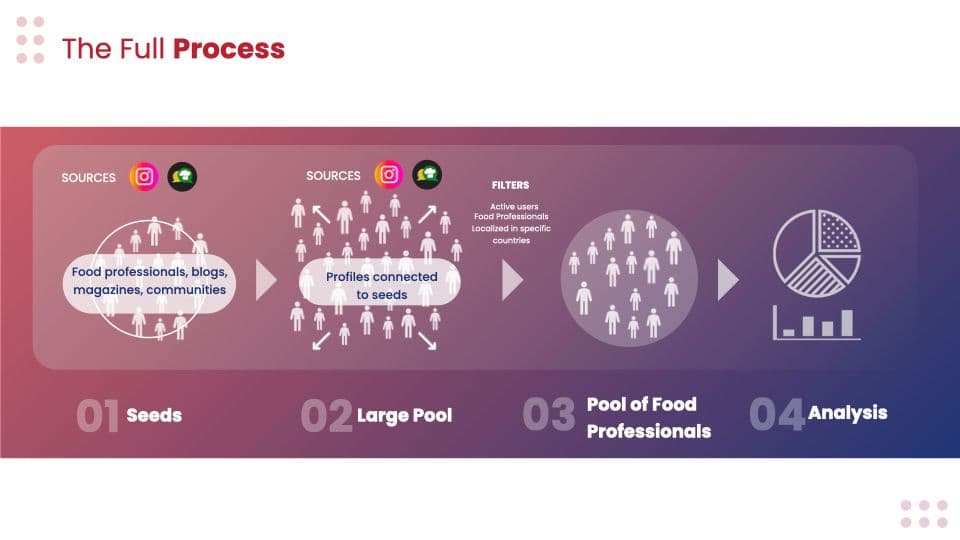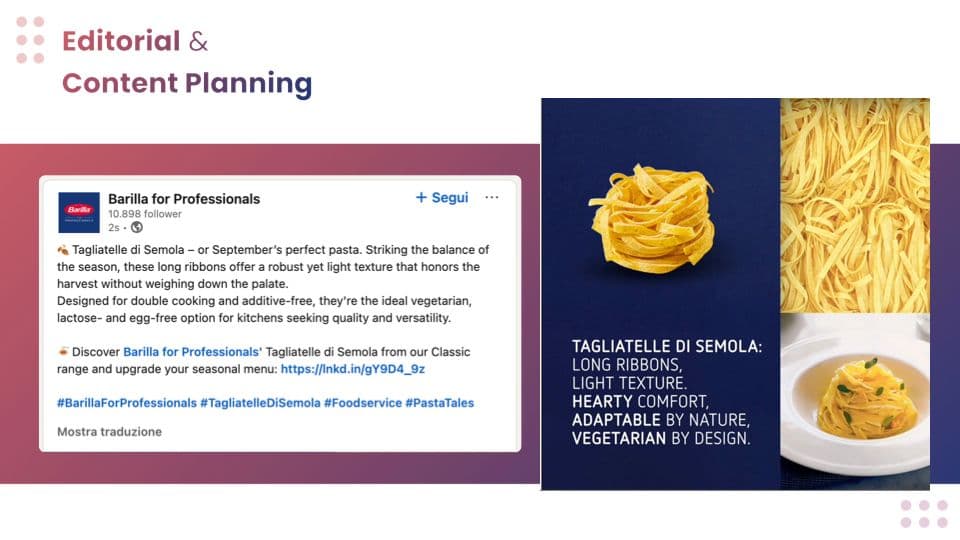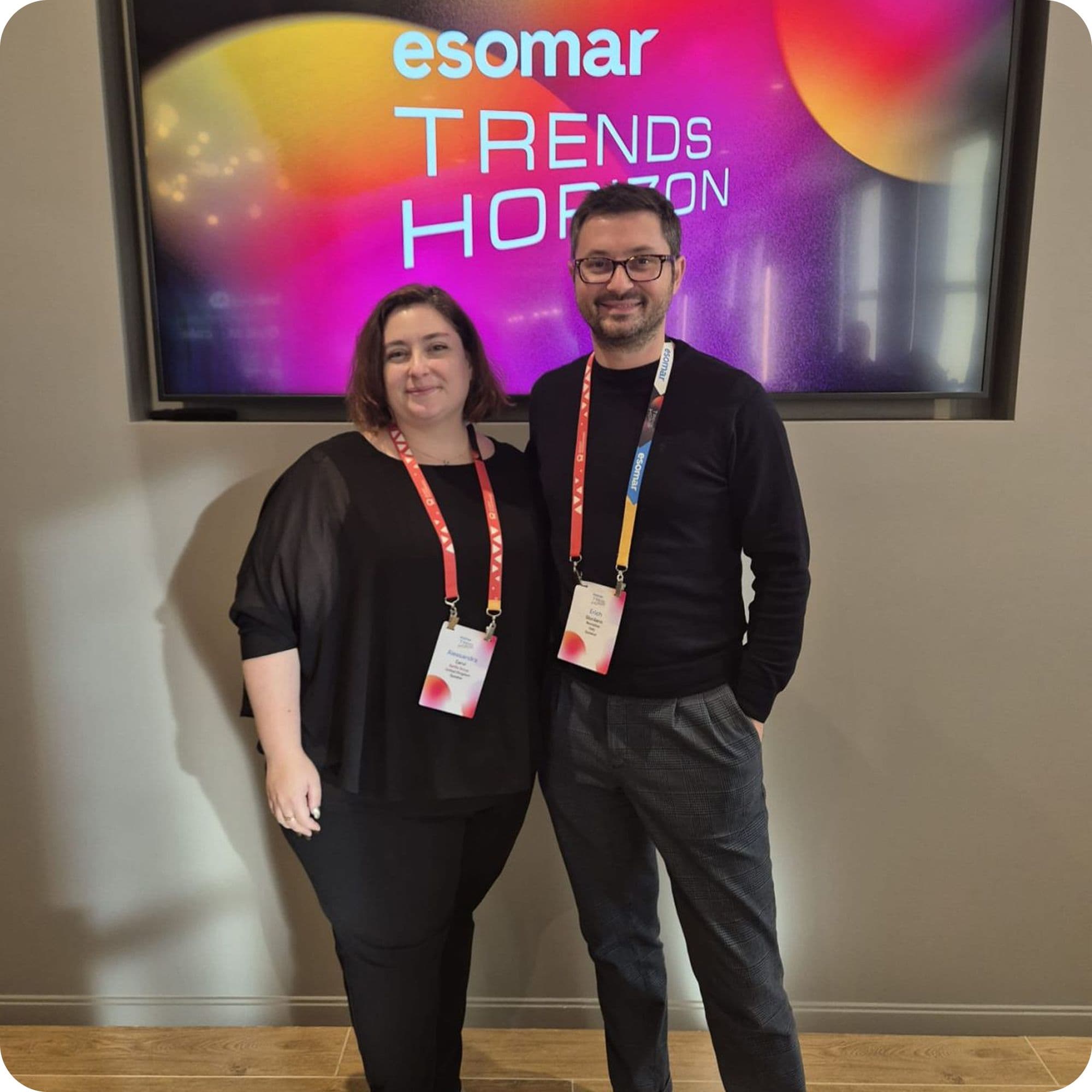How ChefAtlas Redefined Barilla's Foodservice Foresight at ESOMAR Trends Horizon 2025
TREND FORECASTING
At ESOMAR Trends Horizon 2025 in Washington D.C., Nextatlas and Barilla revealed how ChefAtlas is transforming food foresight, turning chefs’ digital conversations into predictive intelligence. From kitchens to boardrooms, discover how hyper-specific data and generative AI are shaping the next frontier of trend prediction.

When the global research community gathered in Washington D.C. for ESOMAR’s Trends Horizon 2025, one conversation stood out for its bold blend of data science and culinary intuition. On stage, Erich Giordano, Head of Business Development at Nextatlas, and Alessandra Cervi, Global Observatory Associate Director at Barilla Group, unveiled how AI and hyper-specific data are reshaping how brands understand — and anticipate — what happens in the kitchen. You can watch the full talk here.
The joint presentation, “Hyper-Specific Data, Generative AI, and Deep Insights: The Ultimate Research Tool”, explored how Barilla and Nextatlas built ChefAtlas, an AI-powered foresight platform analysing real conversations from over 45,000 chefs across 25+ countries. What began as a quest to better understand chefs became a radical rethink of how insight itself is generated — from reactive observation to predictive foresight.
The Challenge: Understanding the True Creators of Culinary Trends
As Alessandra explained to the ESOMAR audience:
“If you were to just give chefs a survey, they’d stir-fry it and serve it back to you. But give them a kitchen — look at what they do, listen to their conversations — and they will tell you much more.”
Traditional research methods were too slow and too generalised to capture the creative pulse of the foodservice world. For Barilla, the need was clear: to reach chefs not as consumers, but as cultural creators who shape the industry from “kitchen to kitchen, plate to plate.”
“Chefs are innovators for sure,” Alessandra continued, “but they have their own language, their own codes. We couldn’t just knock at their door, but we still needed to be there.”

A visualisation of our solution to Barilla's identified challenge
The Breakthrough: Chefs Follow Chefs
Nextatlas’ answer was ChefAtlas — a generative AI intelligence platform designed to monitor and interpret the digital dialogues of professional chefs in real time. By analysing unstructured and structured data, ChefAtlas captures not just what’s trending, but why it’s trending.
“Social media is still a major arena for exchanging opinions, ideas, and needs,” said Erich. “But what’s changed is how AI allows us to filter out the noise. Today we can distinguish genuine food professional voices from spam, extract signals from thousands of posts, and even infer profession, location, and activity to build a reliable picture of the ecosystem.”
This new precision turns open digital conversations into predictive insight — detecting cultural shifts weeks before they surface in mainstream data such as Google Trends.

A slide from the ESOMAR Trends Horizon presentation visualising the process of extracting insights from online sources
The Method: Hyper-Specific Data Meets Human Intuition
At the heart of ChefAtlas lies a multi-layered AI methodology designed to translate digital conversations into structured, chef-verified insights — a process that merges computational precision with human expertise.
It begins with AI-powered audience identification: ChefAtlas isolates a verified network of over 45,000 chefs and food professionals, starting from “seed” sources such as blogs, trade magazines, and professional communities. Through an enlargement methodology, it maps the extended ecosystem — profiles followed by, mentioned by, or interacting with these seeds — across platforms like Instagram, Reddit, X, and specialist chef forums and message boards. Only active, location-verified professionals are retained, ensuring that noise, spam, or consumer chatter are systematically filtered out.
Once the network is defined, conversations are organised through a dynamic, AI-driven taxonomy containing more than 25,000 interconnected nodes. Each node represents a culinary concept — an ingredient, dish, technique, dietary approach, cultural influence, or occasion — linked to others in a constantly evolving structure. This graph enables ChefAtlas to identify not just isolated trends, but the relationships between them: how new formats connect to regional traditions, or how ingredient experimentation anticipates shifts in dining culture.

A slide from our ESOMAR Trends Horizon presentation to explain the process behind ChefAtlas
Within this framework, machine learning and natural language processing (NLP) continuously scan the discourse to detect meaningful patterns, distinguishing between transient fads and structural evolutions. Generative AI capabilities then make these findings explorable through natural-language queries, allowing users to ask questions like “Which sustainable fish are Latin American chefs spotlighting?” or "Which cooking techniques are influencing product texture and preparation?", and receive contextualised, data-grounded answers supported by visualisations and comparative metrics.
Crucially, ChefAtlas follows a human-in-the-loop validation model. Nextatlas' expert researchers intervene at multiple stages — from defining source quality and refining the taxonomy to verifying AI-generated insights — ensuring every layer of automation remains anchored to culinary context and professional judgment. As Erich summarised at ESOMAR:
“There's a lot of automation in what we do, but we’re not missing the human side. This is really a ‘human in the loop’ approach, meaning that there are many different points where there are moments of validation and reckoning, and understanding. We believe that this process of the human, both at the beginning and at the end, to give something meaningful, leads to something that is a purpose-driven approach to research.”
The Impact: Turning Data into Meaningful Innovation
Barilla’s application of ChefAtlas transformed how its teams work across R&D, marketing, and Academia Barilla. “This allowed us to be less reactive and much more proactive,” Alessandra shared. “We can now spot trends before they even hit the marketplace — because we’re looking at what chefs are experimenting with in the moment.”
One tangible example? During the ESOMAR presentation, Alessandra showed how ChefAtlas revealed conversations around emerging pasta formats, leading Barilla to innovate on new textures and shapes within their new bronze-dye premium range, Al Bronzo, to deliver a more indulgent experience.

Credits: Barilla
Beyond the kitchen, the same chef-centric insights are now feeding into Barilla's editorial strategy and customer engagement, proving how professional creativity often prefigures consumer desire.
Foodservice teams use it to craft relevant, insight-backed narratives when engaging customers; R&D teams rely on it to anticipate changes in texture, usage, or preparation styles; and marketing uses it to build editorial content that resonates with professional audiences — far beyond consumer-driven TikTok trends.

An example of the type of editorial content Barilla created for its Barilla for Professionals LinkedIn page using data from ChefAtlas
From Insight to Foresight
At ESOMAR, the joint Barilla–Nextatlas presentation didn’t just showcase a case study — it embodied the future of research: foresight built on trust, precision, and human-AI collaboration. By turning chefs’ online conversations into a living dataset, ChefAtlas demonstrated what Nextatlas calls hyper-specific data: signals rich enough to act on, yet dynamic enough to evolve.
At ESOMAR, this approach resonated deeply with the event’s overarching discussion: how AI for market research is evolving from static dashboards into agentic, learning ecosystems. In this new paradigm, insights are no longer the end product of research — they are part of a continuous feedback loop.
Innovations like ChefAtlas define how data, machine learning, and human reasoning can coexist within an iterative foresight model:
- Search for Data: The system continuously detects weak signals and emergent nodes in unstructured environments.
- Formulate Hypotheses: Generative agents propose exploratory directions, identifying gaps in the current knowledge graph.
- Human Validation: Researchers evaluate and refine those hypotheses, reintroducing contextual understanding and purpose.
- Autonomous Update: The AI retrains its models, enriching the taxonomy with newly validated insights — keeping it alive, dynamic, and self-improving.

The Broader Horizon: Beyond Food
What began as a culinary experiment has quickly become a model for the future of foresight. At ESOMAR Trends Horizon 2025, Erich emphasised that the ChefAtlas framework is not confined to kitchens. It’s a replicable architecture for any sector where conversations reveal emerging meaning before metrics can.
ChefAtlas models a prototype for a new generation of insight systems — systems that don’t just measure what people do, but understand how meaning travels between communities. It reflects a shift from top-down data mining to bottom-up cultural sensing, where patterns emerge organically from authentic, real-time discourse.

Alessandra and Erich at the ESOMAR Trends Horizon 2025 in Washington DC, November 2025
Trend lines, data, and information described in this article emerge from the ongoing analysis performed by Nextatlas on its global observation pool made of innovators, early adopters, industry insiders expressing their views on Twitter, Instagram, and Reddit.
To learn more about our AI, discover Nextatlas Methodology here
Related articles:
Italy
Torino - Via Stampatori 4, 10122(Operational headquarter)+39 011/0864065VAT number and registration number at the Registro delle Imprese di Cagliari: 03428550929 paid share capital € 167.740,00 — © 2024 iCoolhunt SpA.



